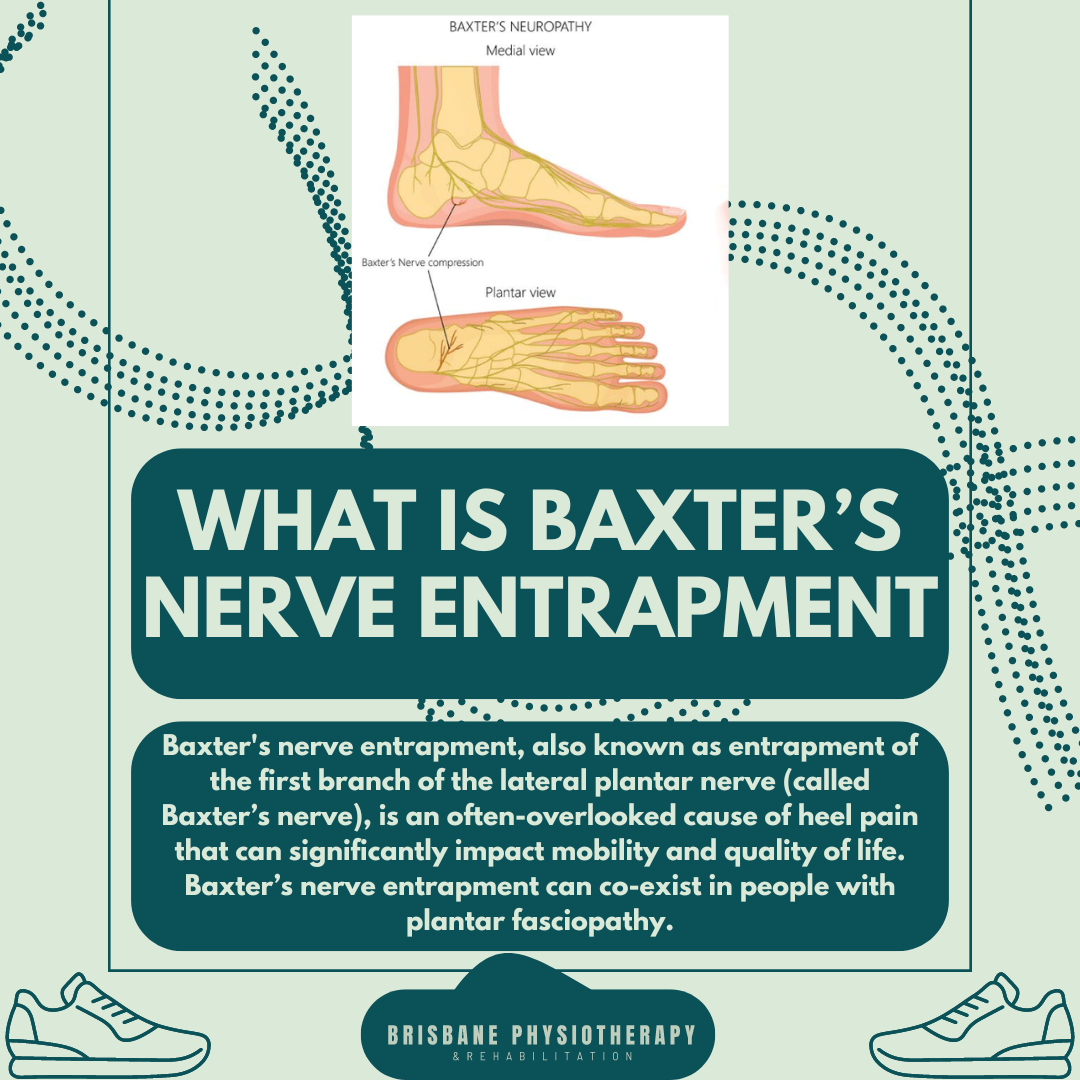What is Baxter’s Nerve Entrapment?
Baxter's nerve entrapment, also known as entrapment of the first branch of the lateral plantar nerve (called Baxter’s nerve), is an often-overlooked cause of heel pain that can significantly impact mobility and quality of life. Baxter’s nerve entrapment can co-exist in people with plantar fasciopathy.
Causes of Baxter's Nerve Entrapment
Baxter's nerve entrapment occurs when the first branch of the lateral plantar nerve becomes compressed or irritated as it passes through the bottom of the foot. This compression can occur due to various factors, including:
Foot Anatomy: Certain anatomical features, such as tightness in the plantar foot muscles and fascia, can increase the risk of Baxter's nerve entrapment.
Foot Trauma: Direct injury to the heel, such as a bruise or fracture, can lead to inflammation, irritation or compression of the nerve.
Overuse: Repetitive activities that place excessive strain on the foot, such as running or jumping, can exacerbate symptoms of Baxter's nerve entrapment.
Symptoms of Baxter's Nerve Entrapment
Common symptoms associated with Baxter's nerve entrapment may include:
Heel pain that may worsen with weight-bearing activities, such as walking or standing.
Sharp or shooting pain in the bottom of the heel or along the inner side of the foot.
Numbness or tingling sensation in the heel or arch of the foot.
Pain that radiates in the heel, ankle or towards the toes
Tenderness to touch over the affected area of the heel.
Diagnosis
Diagnosing Baxter's nerve entrapment typically involves a comprehensive evaluation by a healthcare professional such as a podiatrist or physiotherapist. Assessment typically includes a physical examination and potentially imaging studies such as ultrasound or MRI.
Treatment Options for Baxter's Nerve Entrapment
Treatment for Baxter's nerve entrapment aims to relieve pain, reduce entrapment, and improve nerve function. Treatment options may include:
Rest and Activity Modification: Modifying activities that exacerbate symptoms and incorporating rest periods can help alleviate pressure on the nerve and promote healing.
Footwear Modifications: Wearing supportive shoes with cushioned insoles and adequate support can help reduce irritation to the nerve and provide relief.
Orthoses: Custom orthoses and padding may be prescribed to correct foot mechanics, redistribute pressure, and alleviate symptoms of Baxter's nerve entrapment.
Exercise: Exercises focused on stretching and strengthening the muscles of the foot and ankle can help improve flexibility, stability, and overall foot function.
Medications: Nonsteroidal anti-inflammatory drugs (NSAIDs) or corticosteroid injections may be prescribed to reduce inflammation and alleviate pain associated with Baxter's nerve entrapment.
Surgical Intervention: In cases where conservative treatments fail to provide relief, surgical decompression of the nerve may be considered to alleviate pressure and restore normal nerve function.
Conclusion
Baxter's nerve entrapment is an often-overlooked cause of heel pain that can significantly impact daily activities and quality of life. Early recognition and appropriate treatment are essential for relieving symptoms and preventing long-term complications. If you are experiencing persistent heel pain or other symptoms suggestive of Baxter's nerve entrapment, it's essential to consult with a healthcare professional for a thorough evaluation and personalized treatment plan tailored to your specific needs.
